Geoff McFetridge
- Text by Andrea Kurland
- Illustrations by Geoff McFetridge

Geoff McFetridge likes to talk. A lot.
It’s understandable, considering the hours of solitude it takes to get to where he is. He may be an artist, an animator, a graphic designer of Hollywood proportions who cavorts with Coppola and Jonze, but he’s also reached a place where no one questions what his work is. It’s just Geoff McFetridge, and that’s enough.
The list of things bearing the GM stamp is as impressive as it is long. Through his design studio, Champion Graphics, Geoff has produced work for everyone from Nike to The New York Times, transforming T-shirts into collectable works of art and explaining convoluted corporate messages by drawing a single line. What he does well on paper looks even better on film, whether he’s creating an animation for a music video (The Whitest Boy Alive’s ‘Golden Cage’) or hand-doodling title sequences for a film by Sofia Coppola (Virgin Suicides) or Spike Jonze (Where The Wild Things Are). He’s a collaborator and co-conspirator – a staple of both The Directors Bureau and Beautiful Losers collective, and one of two minds behind “introspective skateboard company” Solitary Arts. But as well as making stuff look good for others, he’s also an artist in his own right, who sees his art shows as “plutonium” and commercial work as “a dead end”.
You see, at thirty-eight Geoff can call himself an “all-round visual auteur” and get away with it because, well, that’s kind of what he is. But you don’t just get to be that guy without putting in the work. What may be a simple doodle to the uninitiated is in fact the culmination of years of hard graft, spent pushing, learning, challenging oneself and striving for success. And even when you get there, it’s still a solitary game – played best when it’s just you and your thoughts in a studio, for hours, all alone.
So it makes sense that Geoff enjoys a good chat. But it’s also totally surprising, given that he can make a single drawing speak a thousand words. “I’m good at singularity,” explains Geoff, succinctly. “Being totally reductive. Doing the most with a single thing.”
It’s halfway through our mammoth interview, and Geoff is hitting his stride. We’ve passed through his childhood (Calgary, Canada: classic suburbia), analysed his education (CalArts, California: prestigious and thorough), relived the highs (being made art director of Grand Royal magazine), acknowledged the lows (realising he sucked at art directing Grand Royal magazine) and are about to get to the here and now (post-Where The Wild Things Are: beyond stoked). But first, it’s time to backtrack a little and find out what’s made Geoff, Geoff.
“Everything my work is about was formed as a child,” says Geoff, who describes his conservative hometown of Calgary as ‘the Texas of Canada’. “Living in this very banal, uniform place gave me a lot of space for introspection… I thought I was gonna be an architect, because that was the only thing I knew about people who were allowed to draw. I didn’t know you were allowed to be an ‘artist’. No one’s dad was an artist, so I never knew there was such a thing.”
It wasn’t until Geoff heard about “something called graphic design – which was being a commercial artist, really” that he realised he could balance the expectations of a suburban upbringing (i.e. to have a job) with his innate desire to simply draw. “I wanted to be successful,” he explains. “My models were looking at, like, skateboard brands are successful, or bands are successful… I never had a model for being an artist… I viewed what I was doing as art, but I thought, ‘I should just call it graphic design, that’s the trick!’ If I said I was a graphic designer, it meant I could do whatever I wanted and still make money and be successful – whatever that is.”
To the casual psychoanalyst, this early choice is Freudian gold. Does Geoff’s decision to become an employable graphic designer, not a struggling artist, infer that our man needs stability in life? “You can talk about these things in a complicated way,” says Geoff, cutting through the crap, “but really it comes down to something as simple as this: I always felt like I needed a job and that steered me towards graphic design… Originally I thought I was drawn to graphic design because I liked seeing lots of stuff I’d made everywhere. I don’t know where that comes from. Maybe it’s the generation I’m a part of – we were sold a lot of stuff, so we wanna make a lot of stuff.”
Whatever it was driving Geoff, it pushed him all the way to The California Institute of the Arts. “I didn’t know specifically why I was going to CalArts, but instinctively I knew I needed, like, a method,” says Geoff, dabbling in a spot of self-analysis. “I had ideas and interests and skills but I needed structure.”
Under the tuition of design legends Ed Fella, Lorraine Wilde and Jeff Keedy, Geoff put himself through his paces – “I wanted to reinvent myself and forced myself to not produce anything that looked like something I had done before” – and graduated in 1995 with the method that he craved. But it wasn’t just a need for structure that brought him to Los Angeles. “I came here because everything I ever liked came from Southern California,” says Geoff, who grew up skateboarding. “I didn’t come to LA because I wanted to meet Spike Jonze, Andy Jenkins and Mark Lewman [the trio behind Club Homeboy and Freestylin’ magazine] – but I knew that’s where they were.”
Being in the right place at the right time, unbelievably, paid off. When Geoff got a call from Andy Jenkins – then art director at Girl Skateboards – things went from good to bad to stellar in a matter of days. “I had been doing graphics for Girl and they said, ‘We’re going to hire you to work here full-time.’ So I quit my bad job and, literally as I’m clearing out my desk, Andy phones me and is like, ‘We can’t hire you.’ Rick Howard [who co-founded Girl with Spike] had apparently freaked out about taking someone else on as they were still growing. Then he said, ‘But a friend of mine, Mark Lewman, just became the editor of Grand Royal magazine and he wants to meet with you.’ All these guys were like totally epic to me. They were the master class – I was reading everything they were doing. It was exciting like, ‘Okay, Mark Lewman’s coming over to my house!’ So he comes over, looks at my work, and asks me to art direct Grand Royal. I’d never made a magazine but was like, ‘Okay cool.’”
Casually over the moon, Geoff moved into a studio across the road from Grand Royal records – aka Beastie Boys HQ – in Atwater Village, Los Angeles, where he’s still based today. Between 1995 and 1997, he painstakingly art directed two issues of the seminal Beastie Boys magazine. His dream job ended up teaching him his biggest lesson yet. “I learned I’m bad at making magazines,” says Geoff. “So I thought, ‘Well, what are you good at?’ and that was very clear. I’m good at taking single images and putting them with text. Which is basically what I was doing this whole time in my sketch books. Drawing is the opposite of work, it’s mindlessness. So I finally said to myself, ‘Stop learning, stop struggling, stop testing yourself. Do what you’re good at.’ It was a big growing-up moment like, ‘Have some commitment to what you’re doing.’”
And that’s exactly what he did. In 1997, Geoff had his first solo exhibition at George’s in Los Angeles, featuring iconic images he produced by “working to a stringent rule of making everything super, super clear”. From then on, instead of struggling, he simply let things fall into place. “That first show was all about making stuff that you and your friends like. Just being true to who you are and your world. It’s a simple concept, but to me that was a revelation,” says Geoff. “Like, I’ve been working with Spike for twelve years or whatever, and everything he does, it’s the Spikeness of it that resonates, you know? Always giving yourself away by your decisions, who you work for and what you do. I think I understood that early on. Only do the stuff you want to do, and do it in a way that won’t embarrass your friends.”
Suffice to say, Geoff would have a hard time embarrassing anyone these days. Even his childhood ambition of owning a skateboard company has been executed with that same reductive eye. “Solitary Arts is about breaking down skateboarding into exactly what it is,” says Geoff. “All the banal stuff you take for granted – the nuts and bolts of skateboarding, like pushing and rolling over something – just appreciating how magical that is! So the graphics are a trigger for a paradigm shift for the rider to look at skateboarding differently, which is really about looking at your life differently. By understanding the image, it’s like you learn a new word. People may look at it and say, ‘Oh, I never thought about that, that’s clever,’ but clever actually means, ‘That’s something I totally understand that’s familiar, but I’ve just never seen or heard it before.’ Having a skateboard company that could do that was another piece of the puzzle that I liked.”
Now that the puzzle’s complete, Geoff’s ready to take a breath. “I think I’ve talked in circles – does any of this make sense?”
You bet it does, Geoff. It makes perfect, simple sense.
You might like

At Belgium’s Horst, electronic music, skate and community collide
More than a festival — With art exhibitions, youth projects and a brand new skatepark, the Vilvoorde-Brussels weekender is demonstrating how music events can have an impact all year round.
Written by: Isaac Muk
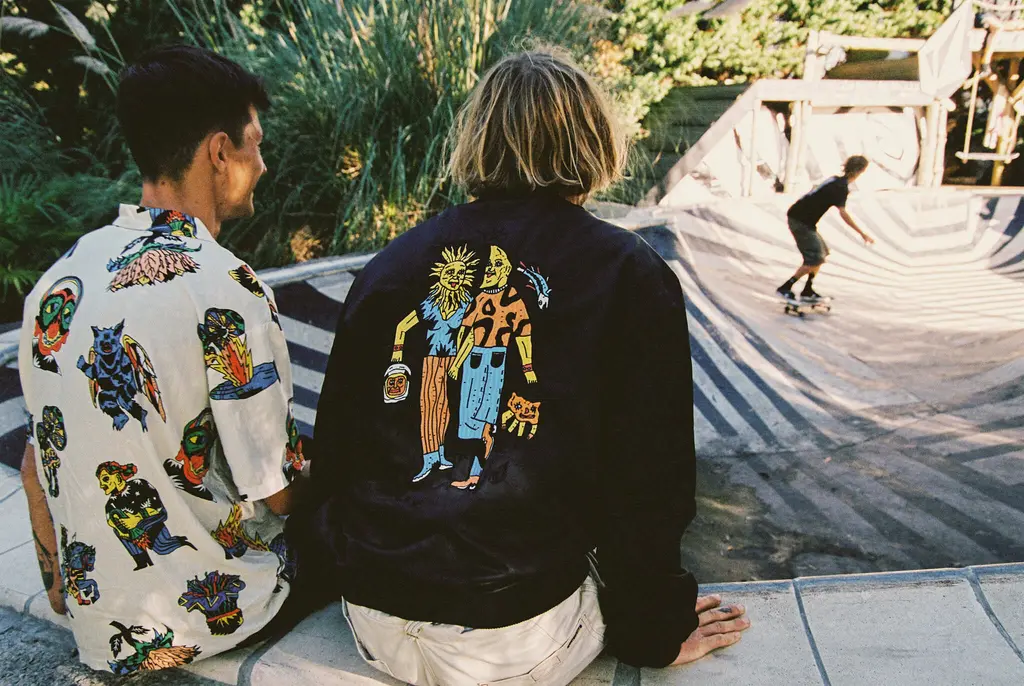
Volcom teams up with Bob Mollema for the latest in its Featured Artist Series
True to This — The boardsports lifestyle brand will host an art show in Biarritz to celebrate the Dutch illustrators’ second capsule collection.
Written by: Huck
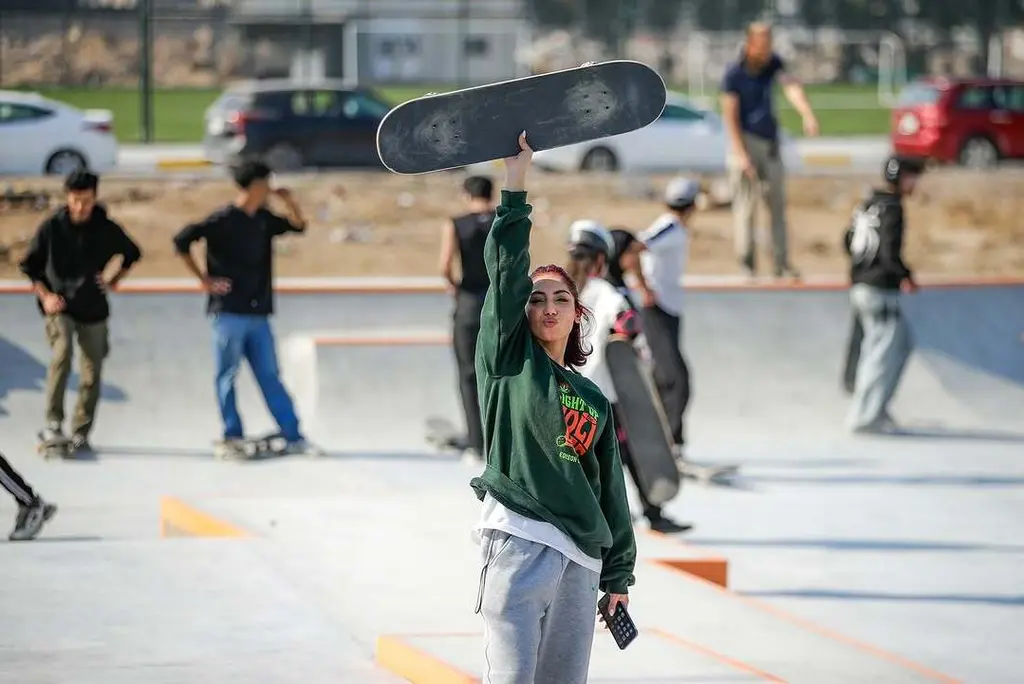
In Baghdad, skater girls are reshaping Iraqi womanhood
Baghdad is rad — As the city’s first skatepark opens, the new space is providing a blank canvas for its board culture. Dalia Dawood speaks to the people looking to make its ramps and rails a safe haven for women and girls.
Written by: Dalia Dawood
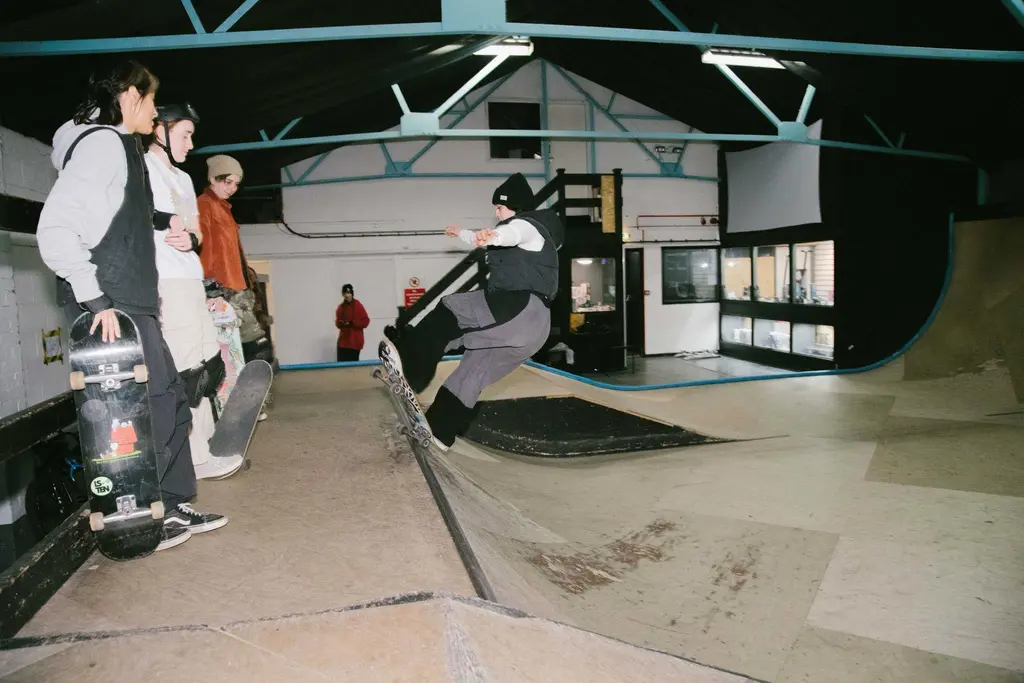
In England’s rural north, skateboarding is femme
Zine scene — A new project from visual artist Juliet Klottrup, ‘Skate Like a Lass’, spotlights the FLINTA+ collectives who are redefining what it means to be a skater.
Written by: Zahra Onsori
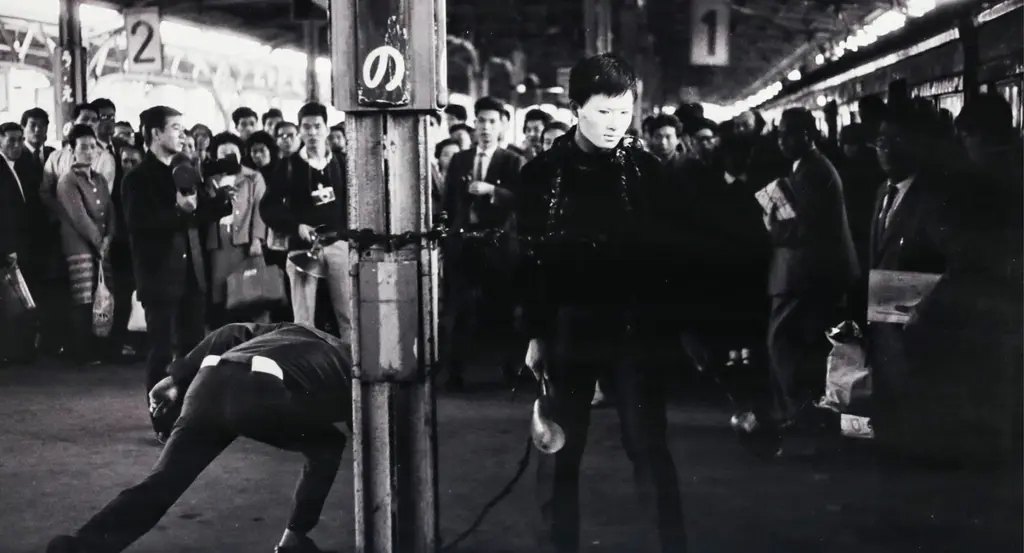
A new documentary explores Japan’s radical post-war photography and arts scene
Avant-Garde Pioneers — Focusing on the likes of Daidō Moriyama, Nobuyoshi Araki, Eikoh Hosoe and many more, the film highlights the swell of creativity in the ’60s, at a time of huge economic change coupled with cultural tensions.
Written by: Isaac Muk
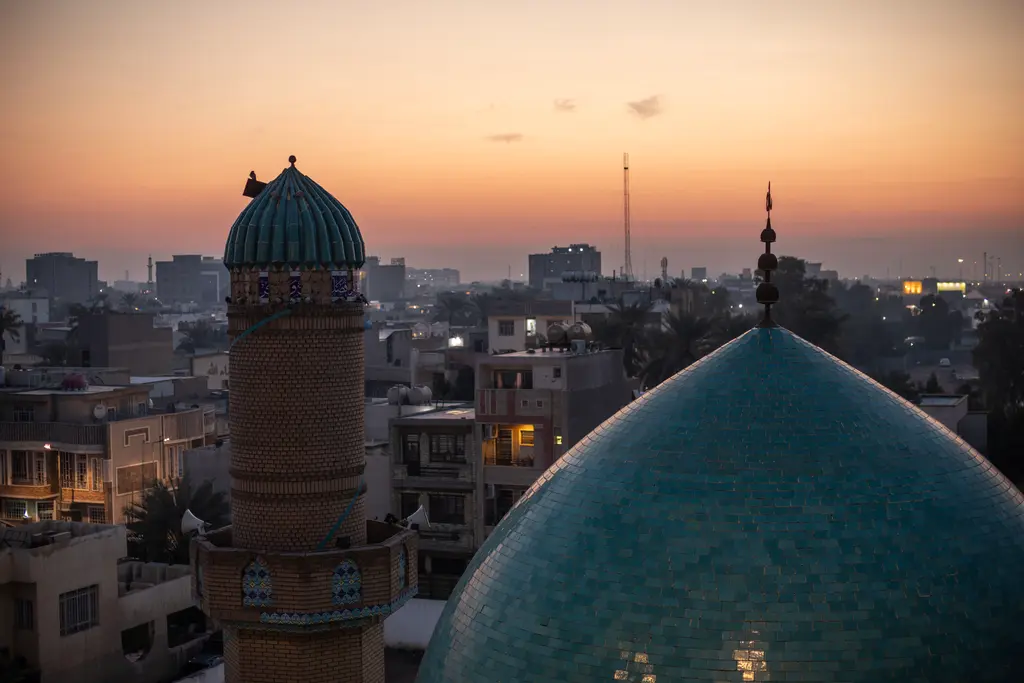
Baghdad’s first skatepark set to open next week
Make Life Skate Life — Opening to the public on February 1, it will be located at the Ministry of Youth and Sports in the city centre and free-of-charge to use.
Written by: Isaac Muk

